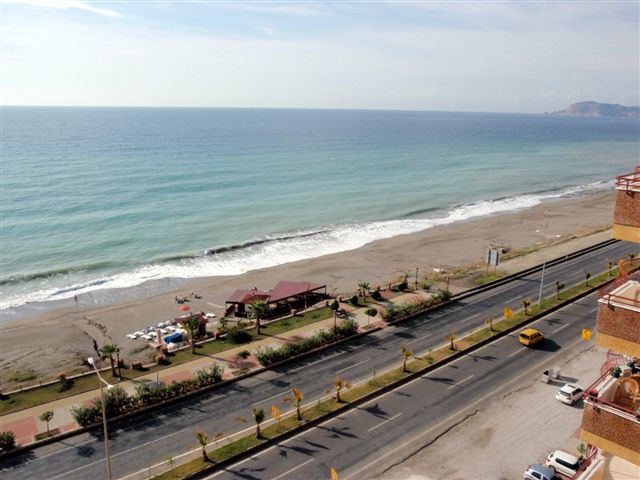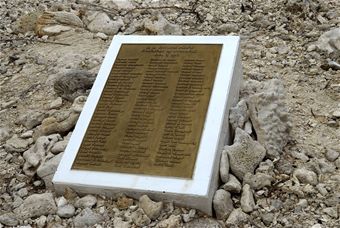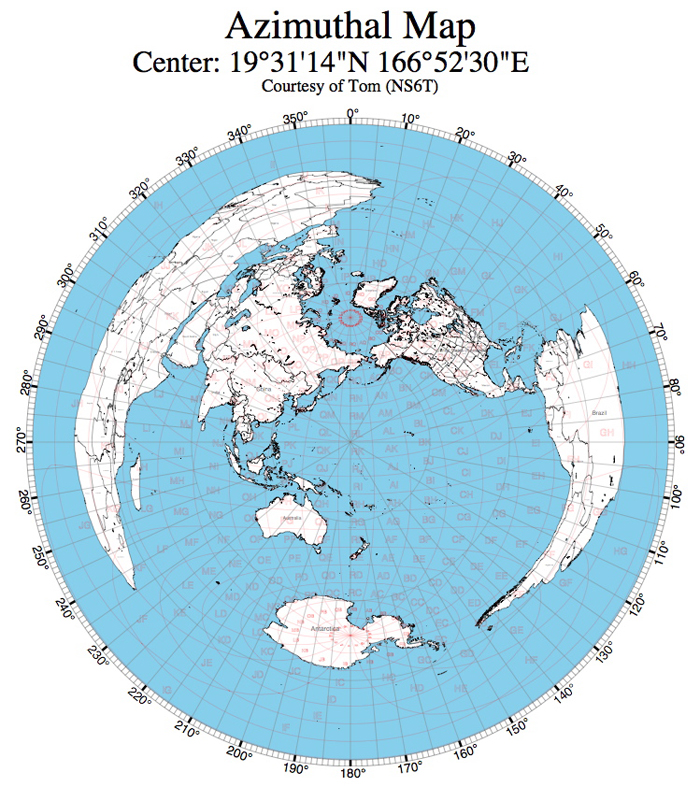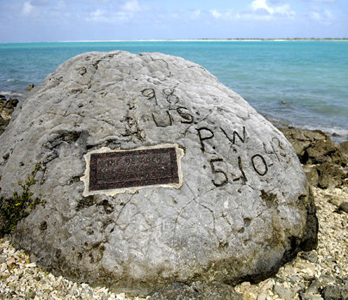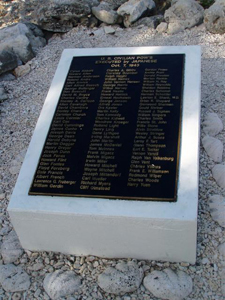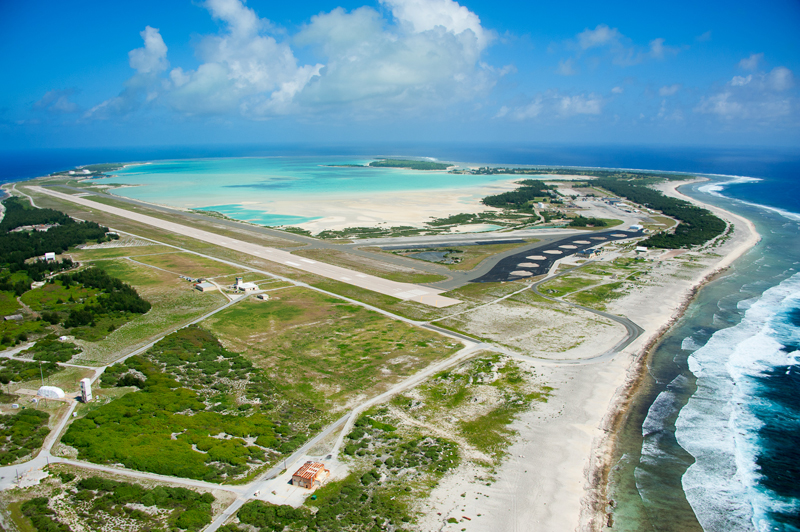The 2013 CQ World-Wide WPX Contest
[Rule changes for 2013 are marked in red text.]
SSB: March 30-31, 2013 CW: May 25-26, 2013Starts: 0000 UTC Saturday Ends: 2359 UTC Sunday
I. Objective: For amateurs world wide to contact as many amateurs and prefixes as possible during the contest period.
II. Period of Operation: 48 hours. Single Operator stations may operate 36 of the 48 hours – off times must be a minimum of 60 minutes during which no QSO is logged. Multi-operator stations may operate the full 48 hours.
III. Bands: Only the 1.8, 3.5, 7, 14, 21, and 28 MHz bands may be used. Observance of established band plans is strongly encouraged.
IV. Terms of Competition for All Categories:
(a) All entrants must operate within the limits of their chosen category when performing any activity that could affect their submitted score. Only the entrant’s call sign may be used to aid the entrant’s score.
(b) A different call sign must be used for each entry.
(c) Do not exceed the total output power limitation of your chosen category on any band. Total output power on any band at any time is measured at the output of the active amplifier(s).
(d) Self-spotting or asking other stations to spot you is not allowed.
(e) Use of QSO alerting assistance is limited to the Single Operator Assisted and Multi-Operator categories. QSO alerting assistance is the use of any technology or outside method that provides call sign and frequency information regarding any other station to the operator. It includes, but is not limited to, use of DX cluster, packet, local or remote callsign and frequency decoding technology (e.g., CW Skimmer), Internet chat rooms or web sites, operating arrangements involving other individuals.
(f) All operation must take place from one operating site. Transmitters and receivers must be located within a 500-meter diameter circle or within the property limits of the station licensee, whichever is greater. All antennas must be physically connected by wires to the transmitters and receivers used by the entrant. Use of any IP network for remote receiving, including web-controlled receivers, is not permitted.
(g) The entry location of a remote station is determined by the physical location of the transmitters, receivers, and antennas. A remote station must obey all station and category limitations.
(h) When two or more transmitters are present on a band, a hardware device MUST be used to prevent more than one signal at any one time. Using two or more transmitters on a band with alternating CQs (soliciting contacts) is not allowed.
(i) Post-contest correcting of call signs by using any database, recordings or other method of confirming QSOs is not allowed.
V. Entry Categories:
A. Single Operator Categories: All operating and logging functions are performed by one person (the operator). Only one transmitted signal is permitted at any time. QSO alerting assistance of any kind places the entrant in the Single Operator Assisted category (see subsection B below).
(a) Single Operator High (All Band or Single Band): QSO alerting assistance is not permitted. Total output power must not exceed 1500 watts.
(b) Single Operator Low (All Band or Single Band): QSO alerting assistance is not permitted. Total output power must not exceed 100 watts.
(c) Single Operator QRP (All Band or Single Band): QSO alerting assistance is not permitted. Total output power must not exceed 5 watts.
B. Single Operator Assisted Categories: All operating and logging functions are performed by one person (the operator). Only one transmitted signal is permitted at any time. Entrants in this category may use QSO alerting assistance.
(a) Single Operator ASSISTED High (All Band or Single Band): Total output power must not exceed 1500 watts.
(b) Single Operator ASSISTED Low (All Band or Single Band): Total output power must not exceed 100 watts.
(c) Single Operator ASSISTED QRP (All Band or Single Band): Total output power must not exceed 5 watts.
C. Single Operator Overlay Categories: Single Operator entrants above may also submit their log for one of the categories shown below by adding an additional line in the Cabrillo log file header called CATEGORY-OVERLAY. All Overlay entries are grouped into high power and low power in the results.
(a) Tribander/Single Element (TB-WIRES): During the contest an entrant shall use only one (1) tribander (any type, with a single feed line from the transmitter to the antenna) for 10, 15, and 20 meters and single-element antennas on 40, 80, and 160 meters.
(b) Rookie (ROOKIE): To enter this category the operator must have been licensed as a radio amateur three (3) years or less on the date of the contest. Indicate the date first licensed in the SOAPBOX field.
D. Multi-Operator Categories (All Band, High power only): More than one person can contribute to the final score during the official contest period. Select category based on number of transmitted signals. Total output power of each transmitted signal must not exceed 1500 watts.
(a) Single-Transmitter (MULTI-ONE): Only one transmitted signal is permitted at any time. A maximum of ten (10) band changes may be made in any clock hour (00 through 59 minutes). For example, a change from 20 meters to 40 meters and then back to 20 meters counts as two band changes. Use a single serial number sequence for the entire log.
(b) Two-Transmitter (MULTI-TWO): A maximum of two transmitted signals is permitted at any time on two different bands. Both transmitters may work any station. A station may only be worked once per band regardless of which transmitter is used. The log must indicate which transmitter made each QSO (column 81 of CABRILLO QSO template for CQ contests). Each transmitter may make a maximum of eight (8) band changes in any clock hour (00 through 59 minutes). Use a separate serial number sequence for each band.
(c) Multi-Transmitter (MULTI-UNLIMITED): A maximum of six transmitted signals, one per band, at any one time. Six bands may be activated simultaneously. Use a separate serial number sequence for each band.
VI. Exchange: RS(T) report plus a progressive contact serial number starting with 001 for the first contact. Note: Multi-Two and Multi-Unlimited entrants use separate serial number sequences on each band.
VII. Contact Points:
(a) Contacts between stations on different continents are worth three (3) points on 28, 21, and 14 MHz and six (6) points on 7, 3.5, and 1.8 MHz.
(b) Contacts between stations on the same continent, but different countries, are worth one (1) point on 28, 21, and 14 MHz and two (2) points on 7, 3.5, and 1.8 MHz. Exception: For North American stations only—contacts between stations within the North American boundaries (both stations must be located in North America) are worth two (2) points on 28, 21, and 14 MHz and four (4) points on 7, 3.5, and 1.8 MHz.
(c) Contacts between stations in the same country are worth 1 point regardless of band.
VIII. Prefix Multipliers: The prefix multiplier is the number of valid prefixes worked. Each PREFIX is counted only once regardless of the band or number of times the same prefix is worked.
(a) A PREFIX is the letter/numeral combination which forms the first part of the amateur call. Examples: N8, W8, WD8, HG1, HG19, KC2, OE2, OE25, LY1000, etc. Any difference in the numbering, lettering, or order of same shall count as a separate prefix. A station operating from a DXCC country different from that indicated by its call sign is required to sign portable. The portable prefix must be an authorized prefix of the country/call area of operation. In cases of portable operation, the portable designator will then become the prefix. Example: N8BJQ operating from Wake Island would sign N8BJQ/KH9 or N8BJQ/NH9. KH6XXX operating from Ohio must use an authorized prefix for the U.S. 8th district (/W8, /AD8, etc.). Portable designators without numbers will be assigned a zero (Ø) after the second letter of the portable designator to form the prefix. Example: PA/N8BJQ would become PAØ. All calls without numbers will be assigned a zero (Ø) after the first two letters to form the prefix. Example: XEFTJW would count as XEØ. Maritime mobile, mobile, /A, /E, /J, /P, or other license class identifiers do not count as prefixes.
(b) Special event, commemorative, and other unique prefix stations are encouraged to participate. Prefixes must be assigned by the licensing authority of the country of operation.
IX. Scoring: A station may be worked once on each band for QSO point credit. Prefix credit may be taken only once.
(a) Single-Operator:
(i) All-Band score is total contact points from all bands multiplied by the number of different prefixes worked.
(ii) Single-Band score is total contact points on the band entered multiplied by the number of different prefixes worked on that band only.
(b) Multi-Operator: Scoring is the same as Single-Operator, All-Band.
X. Awards: Only logs submitted in electronic format are eligible for awards. A single-band log will be eligible for a single-band award only.
To be eligible for an award, a Single Operator station must show a minimum of 4 hours of operation. Multi-operator stations must operate a minimum of 8hours.
(a) Plaques are awarded to recognize top performance in a number of categories. View the current list of plaques and sponsors at
http://www.cqwpx.com/plaques.htm.
Only one plaque will be awarded per entry. A station winning a World plaque will not be considered for a sub-area award. That award will be given to the runner-up for that area if the number of entries justifies the award.
(b) Certificates will be awarded to the highest scoring station in each category listed under Section V . . .
(i) In every participating country.
(ii) In each call area of the United States, Canada, Russia, and Japan.
(iii) At the discretion of the Contest Director second- and third-place awards may be made.
XI. Club Competition: A plaque will be awarded each year to the club that has the highest aggregate score from logs submitted by its members. To be listed in the results, a minimum of three logs must be received from a club.
(a) The club must be a local group and not a national organization (e.g., ARRL or DARC).
(b) Participation is limited to members residing in or operating from a local geographic area (except for DXpeditions conducted by members living within the defined club geographic area). Club contributions from DXpedition scores are allocated as a percentage of the number of club members on the DXpedition.
(c) Single-operator entries can only contribute to one club. Multi-operator scores may be allocated to multiple clubs as a percentage of the number of club members participating in the operation. Please spell out the full club name in your entry.
XII. Instructions for Submission of Logs: We would appreciate receiving all logs in electronic format. Electronic submission of logs is required for anyone competing for an award and for all who use a computer to log the contest or prepare contest logs.
(a) The log MUST show the following for each contact: correct time in UTC, frequency (or band), call, exchange sent, and exchange received. A log without all required information may be reclassified to checklog.
(b) Single band entrants are required to include all contacts made during the contest period, even if on other bands. Only contacts made on the band specified in the Cabrillo header or summary sheet will be considered for scoring purposes. Logs with contacts only on one band will be classified as single band entries.
(c) The CABRILLO file format is the standard for logs. For detailed instructions on filling out the CABRILLO file header, see the WPX Contest Web site <www.cqwpx.com>. Failure to fill out the header correctly may result in your entry being placed in the wrong category or reclassified as a checklog. Note: U.S. stations must indicate the location of where you operated from in the CABRILLO header (e.g., LOCATION: OH).
(d) E-mail or Web upload is the expected method of log submission. SSB logs in CABRILLO format should be sent to
ssb@cqwpx.com. CW logs in CABRILLO format should be sent to
cw@cqwpx.com. Include only your call sign in the “Subject:” line of your e-mail. Web upload of logs is available on the CQ WPX Web site at
www.cqwpx.com. All logs received via e-mail will be confirmed via e-mail. A listing of logs received can be found on the CQ WPX Web Site.
(e) Instructions for NON-CABRILLO electronic logs: If you are not able to submit a CABRILLO format log, please contact the Contest Director for assistance with submitting another format.
(f) Instructions for paper logs: Paper logs may be mailed to CQ WPX Contest, P.O. Box 481, New Carlisle, OH 45344 USA. Each paper log entry must be accompanied by a Summary Sheet listing all scoring information, the category of competition, and the entrant’s name and mailing address in BLOCK LETTERS.
XIII. Rule Violations: Violation of amateur radio regulations or the rules of the contest; unsportsmanlike conduct; taking credit for excessive unverifiable QSOs or multipliers; use of any non-amateur means of communication to SOLICIT, ARRANGE, or CONFIRM any contacts during or after the contest will be deemed sufficient cause for disqualification.
ANY use by an entrant of any non-amateur means including, but not limited to, telephones, email, Internet, Instant Messenger, chat rooms, VoIP, or the use of DX cluster to SOLICIT, ARRANGE, or CONFIRM any contacts during the contest is unsportsmanlike and the entry is subject to disqualification.
An entrant whose log is deemed by the Contest Committee to contain rule violations may be issued a Yellow or Red card depending on the seriousness of the infraction. If the entry is in a multi-operator category, all listed operators are so affected.
YELLOW card: Any entrant or operator issued a yellow card is not eligible for an award and will be listed at the end of the published results.
RED card: Any entrant or operator issued a red card is not eligible for an award, will be listed at the end of the published results, and will be ineligible for any CQ-sponsored contest award for a period of one year beginning with the publication of the violation in CQ magazine.
XIV. Declaration: By submitting an entry in the CQ WPX Contest you agree that: 1) you have read and understood the rules of the contest and agree to be bound by them, 2) you have operated according to all rules and regulations of your country that pertain to amateur radio, 3) your log entry may be made open to the public, and 4) all actions and decisions of the WPX Contest Committee are official and final.
XV. Deadline: All entries must be emailed or postmarked NO LATER than April 6, 2013 for SSB section and June 1, 2013 for the CW section. Logs emailed or postmarked after the deadline may be ineligible for any awards.
E-mail SSB logs to
ssb@cqwpx.com. E-mail CW logs to
cw@cqwpx.com. Review the response email from the robot. Make any corrections suggested and resubmit the log.
Questions pertaining to the WPX Contest may be e-mailed to the WPX Contest Director at
director@cqwpx.com.























